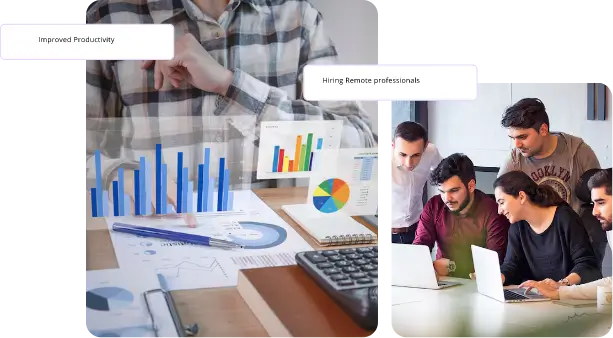What Is a Time Card? Its Role in Workforce Management
With many changes happening in workplaces, accurately monitoring employee hours helps ensure efficiency and compliance. One main way this is done is by using a time card. Used in both paper and digital formats, time cards help record work time, ensure employees are paid correctly, and assist employers in organizing their records.
What Makes Up a Time Card?
A time card is designed to record the start and end times of an employee’s workday. Previously, employees would either use a physical card or type their name into a machine, which would then stamp the time entered. With software, employees can now use digital time cards to log their time electronically.
A time card is usually used to record:
- Name and ID of the employee
- Dates Worked
- Starting and ending times
- Break periods
- Work hours in total
- Overtime hours, if applicable
For calculating wages, tracking attendance, and ensuring compliance with laws, these records are necessary.
What Makes Time Cards Important?
Using time cards at work brings about several important advantages:
- Accurate Payroll Processing: Precise wage calculations are made possible by utilizing data from time cards.
- Legal Compliance: Maintaining accurate records enables employers to adhere to labor regulations regarding work hours and overtime.
- Productivity Monitoring: Time card analysis enables the identification of patterns in both employee attendance and productivity.
- Dispute Resolution: When payroll is incorrect, time cards can provide evidence of what was done and help resolve the issue.
Using time cards to record hours worked makes it easier for everyone to be truthful and reliable on the job.
How Does a Time Card Work?
The way a time card system works depends on the format it uses.
- Manual Time Cards: Employees enter and exit work by punching a time clock, which puts the time on their paper cards.
- Digital Time Cards: Employees now use specialized software to report their hours, and these records are automatically maintained.
Both situations go through the same series of steps:
- Clocking In: The employee marks their beginning time when they start their shift.
- Breaks: All breaks are reported as part of the log.
- Clocking Out: The time is noted at the end of the workday.
- Data Compilation: Total hours are calculated by combining the recorded times, including overtime.
After that, the information is used to manage payroll and keep track of attendance.
Examples of Time Cards in Practice
Example 1: Manufacturing Plant
Swipe cards are used by employees in a factory to sign in and sign out. The hours your employees work are recorded and used to calculate their weekly salaries, ensuring that shifts are not missed.
Example 2: Remote Work Environment
A company that hires remote workers relies on a time-tracking system built into its project management software. People working on a project record the time they spend, which helps both monitor progress and charge for the work.
Example 3: Retail Store
Employees in retail use a biometric time clock to mark their time in and out. It enables the system to detect when people arrive on time and adjust staffing accordingly when there is a high number of guests.
Key Benefits and Risks of Time Cards
Benefits
- Enhances Accuracy: Decreases mistakes in recording work time.
- Improves Efficiency: Time cards automate work-hour tracking, streamline payroll processing, minimize manual errors, and save administrative time, enabling faster payroll cycles and improved workforce management for overall operational efficiency.
- Accountability: Being accountable helps employees arrive on time and be responsible at work.
- Data Analysis: Ongoing data analysis helps identify the costs of labor and how efficiently work is done.
Risks
- Time Theft: This is an opportunity for employees to change their time entries.
- Technical Issues: Digital systems may encounter problems that result in temporary downtime.
- Privacy Concerns: Biometric systems may raise concerns about the security of personal data.
Time Card vs Timesheet
| Feature | Time Card | Timesheet |
|---|
How Time Champ Enhances Time Card Management
Time Champ covers all your needs when it comes to time card management.
- Digital Clock-In/Out: With the digital clock, employees find it easy to mark when they begin and end their shifts.
- Real-Time Monitoring: With real-time monitoring, managers can identify attendance patterns in real-time.
- Integration: Works seamlessly with payroll and HR systems to streamline processing.
- Reporting: Reports contain all the essential information necessary for analysis and compliance with relevant rules.
- Customization: Adjust the system to support the specific requirements of your organization.
Time Champ enables businesses to enhance the accuracy, efficiency, and transparency of their time tracking.
Related Terms
- Timesheet: It records the specific time you work on a certain task or project.
- Time Clock: A time clock is a machine that tracks the beginning and end of each employee’s workday.
- Biometric Time Tracking: It records your clock-in and clock-out times based on your fingerprints.
- Payroll: Payroll is the process of determining and distributing employee wages.
- Attendance Management: Tracking and managing when employees are present or absent from work.
Why Time Cards Still Matter Today
Although workplaces are becoming increasingly remote and automated, time cards remain a crucial part of workforce management. Using timesheets makes it easy to track time, ensure workers are accountable, and ensure accurate payroll. Whether digital or paper, time cards help track and value every minute of work. Businesses of all types rely on a reliable time card system to ensure that employees are paid correctly and the business is well-managed.

